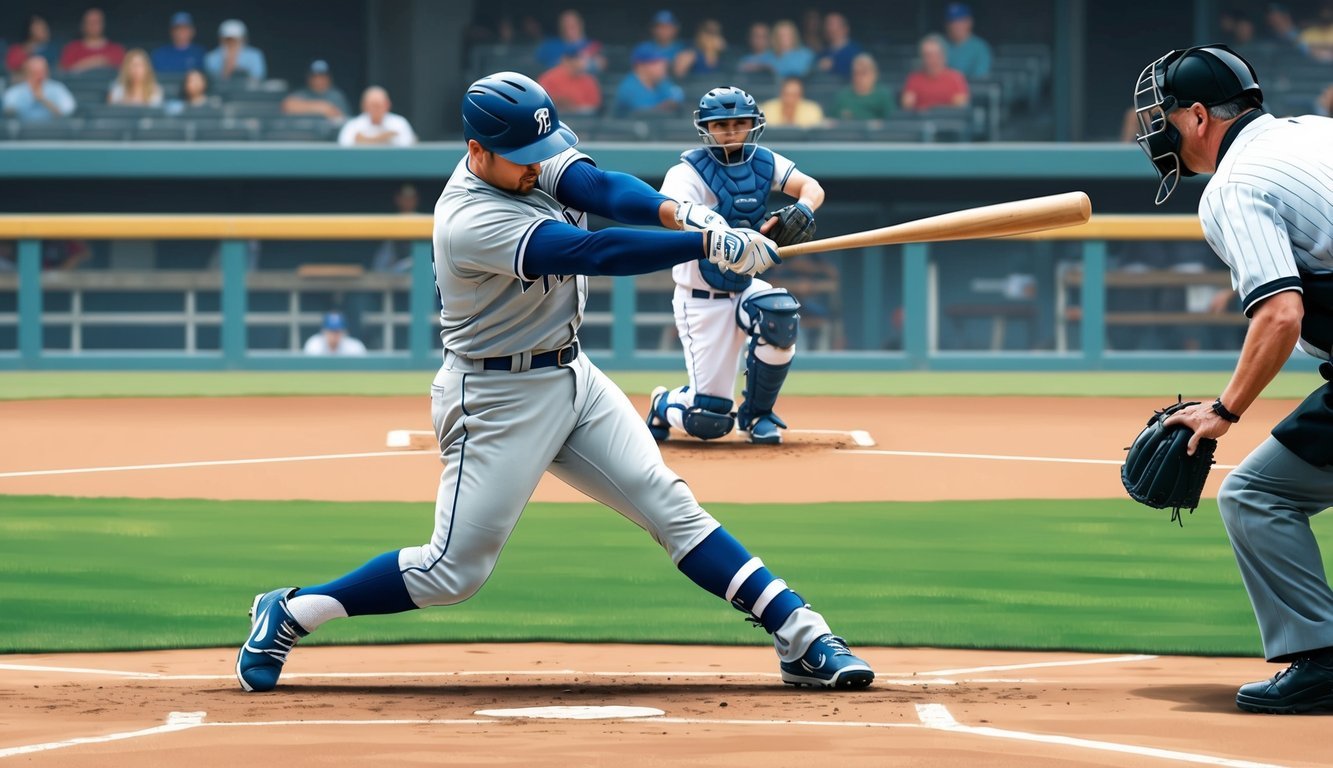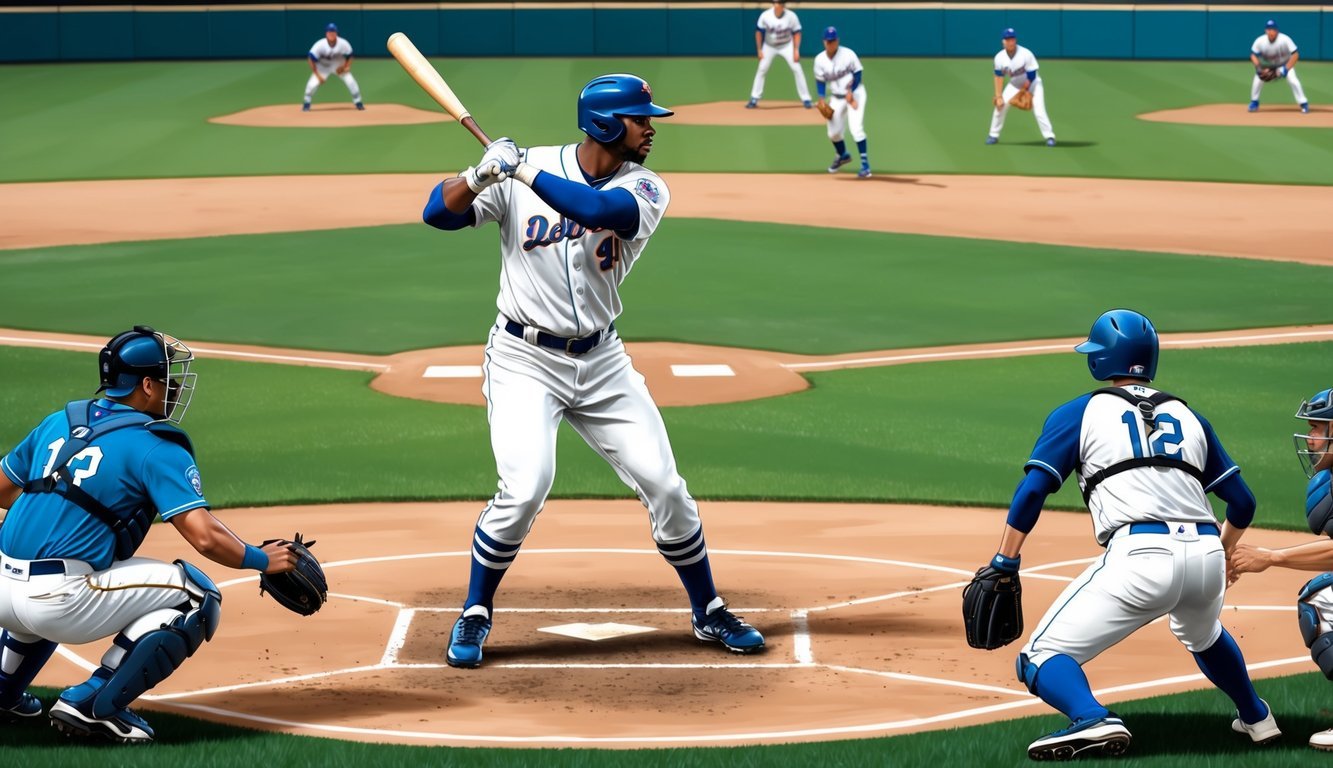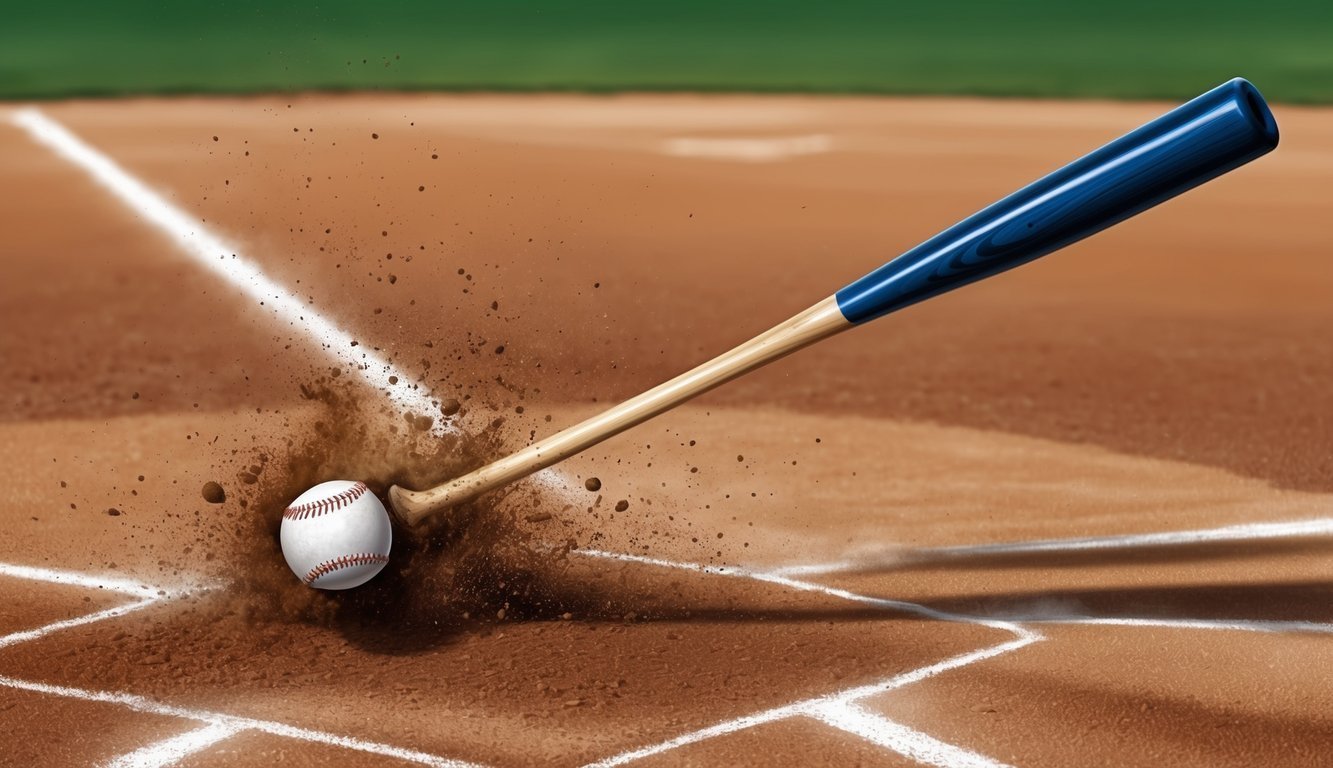Baseball’s heart and soul lies in the batter’s box, where hitters face off against pitchers in a thrilling duel of skill and strategy.
Batters step up to the plate with one primary goal: to get on base and help their team score runs. A skilled batter combines physical prowess, mental acuity, and technical mastery to read pitches, make contact with the ball, and drive it into play effectively.
The art of batting has evolved over the decades, with players developing various techniques to improve their chances of success.
From power hitters who aim for home runs to contact specialists who excel at placing the ball strategically, each batter brings a unique approach to the game.
Teams carefully construct their lineups to maximize offensive potential, considering factors like batting average, on-base percentage, and slugging percentage.
As the 2024 MLB season unfolds, fans eagerly track batting statistics to see which players are leading the league in various categories.
Home run leaders, batting average champions, and those with the highest OPS (on-base plus slugging percentage) are celebrated for their offensive contributions.
These stats not only showcase individual talent but also play a crucial role in team success and player valuation.
Understanding the Batter’s Role
The batter plays a crucial role in baseball, standing at the plate ready to face the pitcher’s throws.
Their primary objective is to hit the ball effectively and advance runners or score runs for their team.
Position in the Batting Order
A batter’s spot in the lineup significantly impacts their role and responsibilities.
The leadoff hitter often possesses speed and a keen eye for getting on base.
Second and third batters typically have strong contact skills.
The cleanup hitter, usually fourth in the order, is known for power and the ability to drive in runs.
Fifth and sixth batters provide protection and additional run-producing potential.
Lower in the order, batters may specialize in specific skills like bunting or hitting to the opposite field.
The lineup’s construction aims to maximize scoring opportunities throughout the game.
Types of Batters
Baseball features various types of batters, each bringing unique strengths to the plate.
Power hitters focus on hitting home runs and extra-base hits, often batting in the middle of the order.
Contact hitters excel at putting the ball in play consistently.
They may hit for a high average and are valuable in moving runners around the bases.
Switch hitters can bat from both sides of the plate, providing strategic advantages against different pitchers.
Some teams employ a designated hitter, who bats in place of the pitcher in certain leagues.
Specialized batters like pinch hitters may enter the game in crucial situations to provide a specific skill or matchup advantage.
Basics of Batting Technique
Mastering the fundamentals of batting is crucial for success at the plate.
A solid foundation in stance, swing mechanics, and bunting can make a significant difference in a batter’s performance.
Proper Stance and Grip
A balanced stance sets the stage for a powerful swing.
Batters should stand with feet shoulder-width apart, knees slightly bent, and weight evenly distributed.
The bat should be held with a relaxed grip, aligning the knuckles for optimal control.
Hands position is key.
Keep them back, away from the body, with the bat at a 45-degree angle.
This allows for a quick, smooth path to the ball.
Eyes should focus on the pitcher, ready to track the incoming pitch.
Comfortable positioning in the batter’s box is essential.
Experiment with different spots to find the best view of pitches and coverage of the strike zone.
The Mechanics of the Swing
A proper swing starts with a small step or stride towards the pitcher.
This initiates weight transfer and generates momentum.
As the pitch approaches, the batter rotates their hips and shoulders, creating torque.
The hands lead the bat through the zone, keeping the barrel back until the last moment.
This quick, compact motion increases bat speed and power.
Eyes remain fixed on the ball throughout the swing.
Follow-through is crucial for maintaining power and direction.
The bat should finish high, with arms extended and body rotated.
Practice this motion regularly to build muscle memory and consistency.
Bunting Technique
Bunting requires precision and control.
To bunt effectively, square up to the pitcher early, turning the body while keeping both hands on the bat.
The bat should be held at a slight angle, with the barrel above the hands.
Present the bat to the ball, don’t push or swing.
Let the pitched ball hit the bat.
Aim to contact the top half of the ball for a downward trajectory.
For sacrifices, direct the bunt towards the foul lines.
For base hits, aim between the pitcher and third baseman.
Proper footwork is essential.
The back foot should pivot, allowing the body to face the pitcher fully.
This positioning provides better control and vision of the incoming pitch.
Rules and Regulations

Baseball has specific rules governing batters at the plate.
These regulations cover the strike zone, ball and strike calls, and various batting infractions.
Understanding the Strike Zone
The strike zone is a key concept for batters.
It extends from the hollow beneath the kneecap to the midpoint between the shoulders and the top of the uniform pants.
The zone’s width matches home plate.
Umpires use this imaginary box to determine balls and strikes.
A pitch passing through any part of the zone is a strike.
Batters must know their personal strike zone, as it can vary slightly based on stance and height.
The strike zone’s boundaries often spark debates between players, coaches, and umpires.
Many batters develop a keen eye for borderline pitches, helping them make better decisions at the plate.
Ball and Strike Calls
Home plate umpires make ball and strike calls.
A strike is called when:
- The batter swings and misses
- A pitched ball passes through the strike zone
- A foul ball is hit with less than two strikes
A ball is called when a pitch misses the strike zone and the batter doesn’t swing.
After four balls, the batter walks to first base.
Three strikes result in a strikeout.
Umpires use hand signals and vocal calls to indicate their decisions.
These calls can greatly impact an at-bat and often influence game outcomes.
Batting Fouls and Infractions
Foul balls count as strikes, except when a batter already has two strikes.
In this case, the count remains unchanged.
A foul tip caught by the catcher is considered a third strike, resulting in an out.
Batters must stay within the batter’s box while hitting.
Stepping out can result in an automatic strike.
Other infractions include:
- Interference with the catcher
- Hitting the ball while outside the box
- Using an illegal bat
These rules ensure fair play and maintain the game’s integrity.
Umpires closely watch for violations and enforce penalties when necessary.
Strategizing at the Plate

Successful hitting requires more than just physical skills.
A batter’s mental approach and strategic thinking can greatly impact their performance at the plate.
Facing Different Types of Pitchers
When facing a power pitcher, batters should prepare for high-velocity fastballs and sharp breaking pitches.
They need quick reflexes and a compact swing to make solid contact.
Against finesse pitchers, patience is key.
These hurlers rely on changing speeds and hitting spots.
Batters should look for patterns and wait for mistakes left over the plate.
Left-handed batters often have an advantage against right-handed pitchers due to better pitch visibility.
They can adjust their stance slightly to get a clearer view of the ball’s release point.
Right-handed hitters facing lefty pitchers should focus on picking up the ball early.
Tracking the pitch from the pitcher’s hand helps with timing and pitch recognition.
The Count and Hitter’s Advantage
The count drastically affects a batter’s approach.
In hitter’s counts (1-0, 2-0, 3-1), batters can be more aggressive, looking for a pitch to drive.
- 0-0 count: Look for a fastball to hit
- 2-0 or 3-1 count: “Green light” to swing at a preferred pitch
- 3-0 count: Often take a pitch unless given a sign to swing
In pitcher’s counts (0-1, 0-2, 1-2), batters need to protect the plate and may choke up on the bat for better control.
They should be ready for off-speed pitches and aim to spoil tough strikes.
Full counts (3-2) require a balanced approach.
Batters must be prepared to hit while also having the discipline to take close pitches for a walk.
When to Swing or Take a Pitch
Deciding when to swing involves quick judgment and situational awareness.
Early in the count, batters should look for pitches in their “hot zones” where they hit best.
With two strikes, the strategy shifts to contact and putting the ball in play.
Batters often widen their stance and shorten their swing to protect against strikeouts.
In certain game situations, taking pitches can be strategic:
- Leadoff hitter trying to see more pitches
- Runner on first with less than two outs (avoid double play)
- Late innings when working pitch count is crucial
Sacrifice situations may call for a bunt or a fly ball, requiring a adjusted swing to execute properly.
Recognizing these moments and adapting is crucial for team success.
Beyond Batting: Base Running and Scoring

Base running and scoring are crucial aspects of baseball that extend a batter’s impact beyond the initial hit.
These skills can make the difference between winning and losing games.
Advancing the Bases
Baserunners aim to move from base to base safely.
A single allows a batter to reach first base.
Doubles and triples advance runners further.
Savvy baserunners take extra bases on hits, wild pitches, or fielding errors.
Smart base running involves:
- Reading the ball off the bat
- Watching base coaches for signals
- Knowing opposing fielders’ arm strengths
- Taking appropriate leads off bases
Speed is an asset, but good instincts and quick decision-making are equally important.
Runners must be alert to capitalize on any opportunity to advance.
The Role of a Baserunner
Baserunners play a vital role in creating scoring opportunities.
They can:
- Distract pitchers, potentially causing mistakes
- Force fielders to make tough decisions
- Set up double steals or hit-and-run plays
Effective baserunners apply pressure on the defense.
They take aggressive leads, threaten to steal, and force throws to keep them close to the base.
A runner on first base opens up the possibility for a force play at second.
Runners on second or third are in scoring position, increasing the chances of crossing home plate on a hit.
Scoring Strategies
Scoring strategies vary based on game situations.
Teams may play for one run or aim for a big inning.
Common scoring tactics include:
- Sacrifice bunts to advance runners
- Hitting behind runners to move them over
- Stealing bases to get into scoring position
- Tagging up on fly balls to advance or score
Home runs instantly put runs on the board, but small ball tactics can be equally effective.
A combination of patient at-bats, timely hitting, and aggressive base running often leads to success.
Coaches consider factors like the inning, score, and opposing pitcher when deciding how aggressively to pursue runs.
The ultimate goal is always to touch home plate and add to the team’s score.
